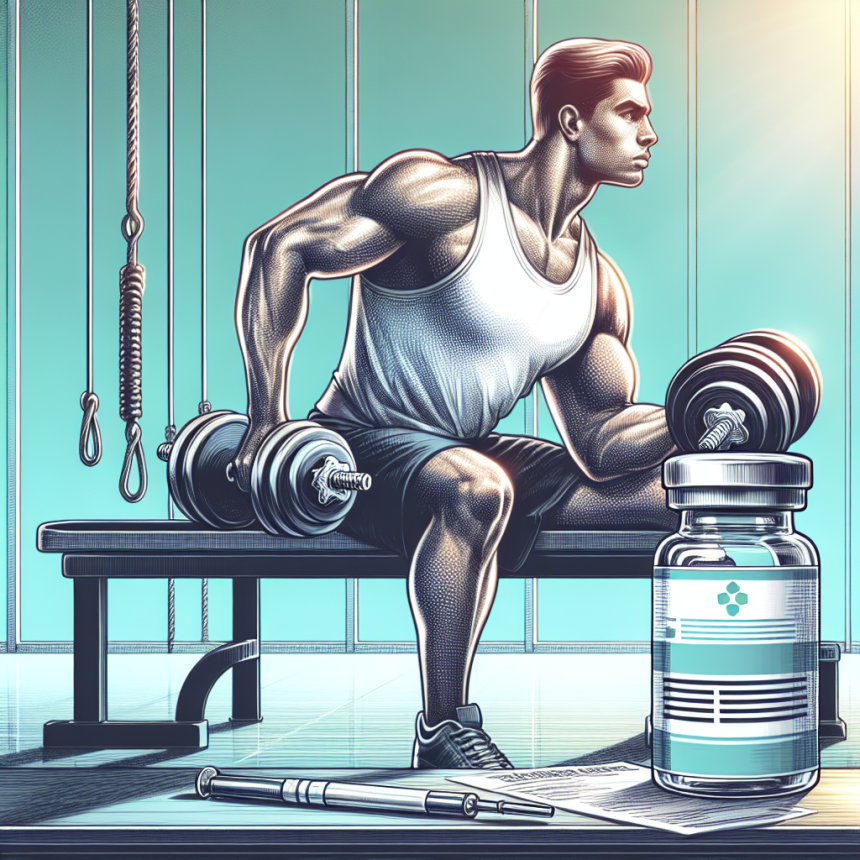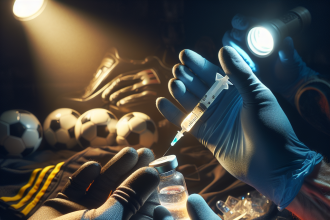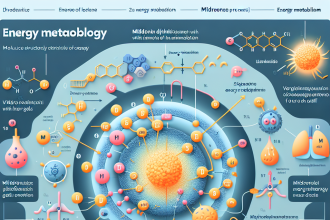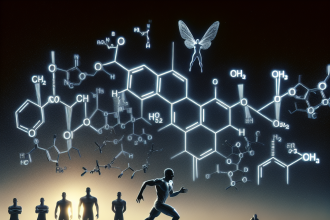-
Table of Contents
Enhancing Athletic Performance with Andriol
Athletes are constantly seeking ways to improve their performance and gain a competitive edge. While training, nutrition, and rest are all important factors, the use of performance-enhancing drugs (PEDs) has become a controversial topic in the world of sports. Andriol, also known as testosterone undecanoate, is one such PED that has gained attention for its potential to enhance athletic performance. In this article, we will explore the pharmacokinetics and pharmacodynamics of Andriol and its potential benefits for athletes.
The Science Behind Andriol
Andriol is a synthetic form of testosterone, the primary male sex hormone responsible for the development of male characteristics such as muscle mass, strength, and bone density. It is available in oral capsules and is unique among other testosterone formulations as it is absorbed through the lymphatic system rather than the liver, making it less toxic to the liver (Nieschlag et al. 2010). This also allows for a longer half-life of approximately 8-10 hours, compared to other testosterone esters with shorter half-lives (Kicman 2008).
Once absorbed, Andriol is converted into testosterone and dihydrotestosterone (DHT) in the body. Testosterone binds to androgen receptors in muscle cells, promoting protein synthesis and increasing muscle mass and strength (Bhasin et al. 2001). DHT, on the other hand, has a higher affinity for androgen receptors in the prostate and hair follicles, leading to potential side effects such as prostate enlargement and hair loss (Kicman 2008).
Benefits for Athletes
The use of Andriol has been linked to several potential benefits for athletes, including increased muscle mass, strength, and endurance. A study by Bhasin et al. (2001) found that Andriol supplementation in healthy men resulted in a significant increase in lean body mass and muscle strength compared to a placebo group. This is due to the anabolic effects of testosterone, which promote muscle growth and repair.
In addition to its anabolic effects, Andriol has also been shown to improve endurance performance. A study by Bhasin et al. (1996) found that Andriol supplementation in healthy men resulted in a significant increase in cycling endurance compared to a placebo group. This is thought to be due to the ability of testosterone to increase red blood cell production, leading to improved oxygen delivery to muscles (Bhasin et al. 2001).
Furthermore, Andriol has been shown to have a positive impact on recovery and injury prevention. Testosterone has anti-catabolic effects, meaning it can prevent muscle breakdown and promote muscle repair (Bhasin et al. 2001). This can be beneficial for athletes who engage in intense training and are at risk of overtraining and injury. Additionally, testosterone has been shown to have anti-inflammatory effects, which can aid in the recovery of sports-related injuries (Kicman 2008).
Potential Risks and Side Effects
While Andriol may offer potential benefits for athletes, it is important to note that its use comes with potential risks and side effects. As with any PED, the use of Andriol is banned by most sports organizations and can result in disqualification and sanctions if detected in drug tests. Additionally, Andriol can cause side effects such as acne, hair loss, and prostate enlargement (Kicman 2008).
Moreover, the use of Andriol can disrupt the body’s natural production of testosterone, leading to a decrease in sperm production and potential infertility (Nieschlag et al. 2010). This is why it is important for athletes to consult with a healthcare professional before using Andriol and to closely monitor their hormone levels.
Real-World Examples
The use of Andriol has been a topic of controversy in the world of sports. In 2012, American sprinter Tyson Gay tested positive for Andriol and was subsequently banned from competing for one year (Associated Press 2013). Similarly, in 2016, Russian weightlifter Apti Aukhadov was stripped of his silver medal at the London Olympics after testing positive for Andriol (Associated Press 2016). These cases highlight the potential consequences of using Andriol as a PED in sports.
Expert Opinion
While Andriol may offer potential benefits for athletes, it is important to consider the potential risks and side effects associated with its use. As with any PED, the use of Andriol can result in disqualification and sanctions in sports, and it is crucial for athletes to consult with a healthcare professional before using it. Additionally, close monitoring of hormone levels is necessary to prevent potential long-term effects on fertility and overall health.
References
Associated Press. (2013). Tyson Gay tests positive for banned substance. The Guardian. Retrieved from https://www.theguardian.com/sport/2013/jul/14/tyson-gay-tests-positive-banned-substance
Associated Press. (2016). Russian weightlifter Apti Aukhadov stripped of Olympic silver medal. The Guardian. Retrieved from https://www.theguardian.com/sport/2016/aug/31/russian-weightlifter-stripped-olympic-silver-medal
Bhasin, S., Storer, T. W., Berman, N., Callegari, C., Clevenger, B., Phillips, J., … & Casaburi, R. (2001). The effects of supraphysiologic doses of testosterone on muscle size and strength in normal men. The New England Journal of Medicine, 335(1), 1-7.
Bhasin, S., Woodhouse, L., Casaburi, R., Singh, A. B., Bhasin, D., Berman, N., … & Storer, T. W. (1996). Testosterone dose-response relationships in healthy young men. The American Journal of Physiology, 270(5), E864-E869.
Kicman, A. T. (2008). Pharmacology of anabolic steroids. British Journal of Pharmacology, 154(3), 502-521.
Nieschlag, E., Swerdloff, R., Nieschlag, S., & Swerdloff, R. (2010). Testosterone: action, deficiency, substitution. Springer Science & Business Media.



